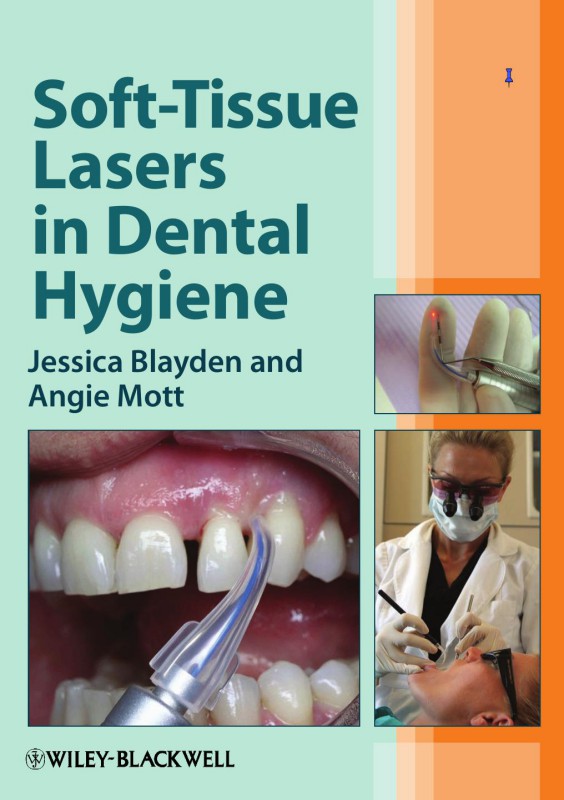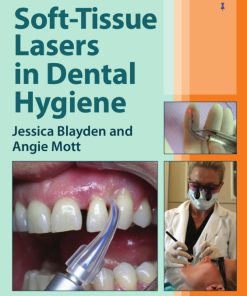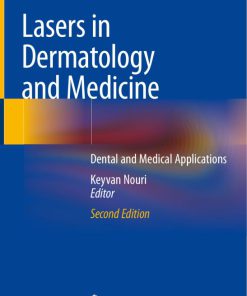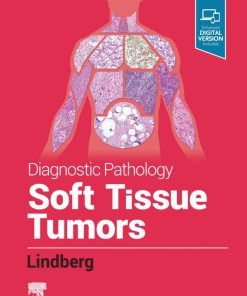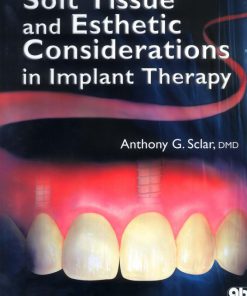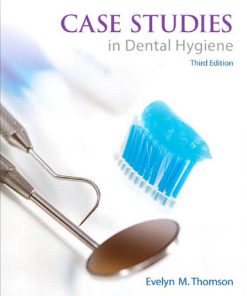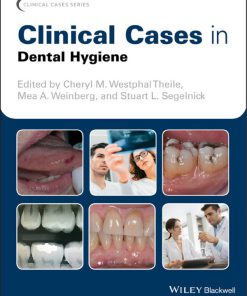Soft Tissue Lasers in Dental Hygiene 1st Edition by Jessica Blayden 9781119025054 1119025052
$50.00 Original price was: $50.00.$25.00Current price is: $25.00.
Authors:Blayden, Jessica.,Mott, Angie. , Author sort:Blayden, Jessica.,Mott, Angie. , Published:Published:Nov 2015
Soft Tissue Lasers in Dental Hygiene 1st Edition by Jessica Blayden – Ebook PDF Instant Download/Delivery. 9781119025054, 1119025052
Full download Soft Tissue Lasers in Dental Hygiene 1st Edition after payment

Product details:
ISBN 10: 1119025052
ISBN 13: 9781119025054
Author: Jessica Blayden
The uses and benefits of soft-tissue lasers in dental hygiene practice are myriad. Lasers are used for more effective debridement, scaling and planning, with less pain and bleeding. Hygienists can detect sub- and supra-gingival calculus, remove the bacteria in pockets, and remove granulation, among other treatments.
Soft-tissue Lasers in Dental Hygiene is the first book to explain laser use in periodontal therapy. Authors Jessica Blayden and Angie Mott are registered dental hygienists who have been using laser therapy in their dental hygiene practices for several years, and here they share their experience. Blayden and Mott begin by discussing laser history, physics, components, and safety. They then describe the specifics of periodontal therapy―what lasers can be used for, how to implement them, techniques, and protocols. The authors also present case studies that demonstrate how treatment plans are implemented for varying levels of periodontal disease. The authors conclude with chapters on patient communication and practice management.
Soft Tissue Lasers in Dental Hygiene 1st Table of contents:
1. Laser history
Figure 1.1 Theodore H. Maiman.
Figure 1.2 Albert Einstein.
Figure 1.3 Coefficient of absorption for various components in tissue. Er:YAG, erbium: yttrium aluminium garnet; Er:YSGG, erbium: yttrium scandium gallium garnet; Er, CR:YSSG, erbium, chromium: yttrium scandium gallium garnet; HPD, dialysate of hydropenic plasma; HbO2, hemoglobin; Nd:YAG, neodymium:yttrium aluminium garnet.
REFERENCES
2. Laser physics
Figure 2.1 Common wavelength measurements.
LASER CLASSIFICATION
LASER SAFETY
Table 2.1 Laser Classifications
Table 2.2 Laser Safety Officer Responsibilities
Figure 2.2 An example of a warning sign.
Potential dangers: Eye injuries
Figure 2.3 Laser safety eyewear.
Figure 2.4 Revolution Laser Loupe.
Figure 2.5 Revolution Laser Loupe with insert, telescopes down.
Figure 2.6 Revolution Laser Loupe with insert, telescopes up.
Figure 2.7 Radon Laser Loupe.
Figure 2.8 Titanium Prismatic Laser Loupe.
Laser plume
Fire
Skin damage
Infection control
Safety controls
REFERENCES
3. Laser components
THE LASER COMPONENTS
Table 3.1 Lasers and Their Characteristics
EMISSION MODES
TYPES OF POWER AND CYCLES
Figure 3.1 Laser tissue interaction.
Figure 3.2 A properly cleaved fiber.
Figure 3.3 Aiming beam of a well-cleaved fiber.
Figure 3.4 A poorly cleaved fiber.
Figure 3.5 Aiming beam of a poorly cleaved fiber.
TISSUE EFFECTS
Changes with heat
Figure 3.6 Thermal effect of laser on tissue.
TISSUE INTERACTIONS
LASER DELIVERY SYSTEMS
SUGGESTED READINGS
4. Lasers available in dentistry
DIFFERENT LASERS FOR DIFFERENT PROCEDURES
Alexandrite laser
Figure 4.1 Electromagnetic spectrum.
Figure 4.2 Electromagnetic spectrum.
Argon laser
Figure 4.3 Coefficient of absorption for various components in tissue.
Table 4.1 Coefficients of Soft- and Hard-Tissue Lasers and Absorption Characteristics of Dental Lasers
He:Ne laser
Diode laser
Nd:YAG laser
Ho:YAG laser
Erbium laser
CO2 laser
CURRENTLY MANUFACTURED LASERS
Zila
Soft lase 3
Product specifications
Figure 4.4 Soft Lase 3.
Clinical applications
NV Microlaser™
Figure 4.5 NV Microlaser.
Product specifications
Clinical applications
NV Ortho
Product specifications
Figure 4.6 NV Ortho.
Clinical applications
IVOCLAR
Odyssey® 2.4 G diode laser
Product specifications
Figure 4.7 Odyssey® 2.4 G laser.
Navigator
Product specifications
Figure 4.8 Odyssey® Navigator laser.
AMD LASERS
Piccaso
Product specifications
Clinical applications
Figure 4.9 Picasso laser.
Figure 4.10 Picasso Lite laser.
Picasso lite
Product specifications
Clinical applications
Figure 4.11 EZ Lase laser.
BIOLASE
EZ Lase
Figure 4.12 iLase™ laser.
Product specifications
iLase™
Product specifications
TECHNOLOGY4MEDICINE
1064XLASE laser
Product specifications
Figure 4.13 1064XLASE laser.
Clinical applications
REFERENCES
5. Periodontal therapy
DEFINITIONS
Causes and symptoms
Pathogenesis of periodontal disease
Figure 5.1 Mature biofilm.
Effects of periodontal disease
Figure 5.2 Oral inflammation.
DIAGNOSING PERIODONTAL DISEASE
Figure 5.3 Gingivitis.
Figure 5.4 “Clinically normal” or “clinically healthy” gingival tissue.
Figure 5.5 Progression to peridontal disease.
Gingivitis
Periodontitis
Borderline periodontal disease
Early periodontal disease
Moderate periodontal disease
Advanced periodontal disease
Other forms
TREATMENTS
Lasers in periodontal therapy
REFERENCES
6. What can be achieved with lasers: possible guided-tissue regeneration
USING LASERS
Guided-tissue regeneration
Laser-assisted periodontal therapy
Figure 6.1 An 8-month difference.
Figure 6.2 (a) Before laser therapy and (b) after laser therapy.
Biostimulation
Figure 6.3 (a)–(b) 1-year difference.
Figure 6.4 Traditional X-ray, starting to see the lamina dura forming, showing the signs of healing and possible bone regrowth.
Figure 6.5 Digital X-ray, starting to see the lamina dura forming, showing the signs of healing and possible bone regrowth.
Figure 6.6 Healing process is beginning.
LASER STUDY DISCUSSION
Figure 6.7 Healing process continued.
WOUND HEALING
REFERENCES
7. Laser applications for the dental hygienist
TREATMENT PROTOCOLS
SUGGESTED READINGS
8. How to implement lasers in dental hygiene
LASER BACTERIAL REDUCTION
Figure 8.1 Laser bacterial reduction introduction to the patient. This is used in the patient’s periodontal treatment folder.
Figure 8.2 Laser set at 1.5 W, pulsed, for laser bacterial reduction.
LASER-ASSISTED PERIODONTAL THERAPY
Figure 8.3 Laser settings for laser de-epithelization.
Figure 8.4 Example of periodontal disease treatment sheet given to patient, according to periodontal disease classification. It is used in the patient periodontal treatment folder.
Treatment planning formulas
Scheduling
Initial periodontal therapy appointment
Classic periodontal therapy appointment
Figure 8.5 Example of the home care instruction sheet given to the patient to take home. This is used in the patient periodontal treatment folder.
Figure 8.6 Process using laser from the crest of the pocket moving down to the base of the pocket in a horizontal/diagonal direction toward the tissue continuously moving the laser fiber.
Figure 8.7 Initiated tip with diseased coagulated tissue from the infected periodontal pocket.
Figure 8.8 Calibrating the fiber tip with the periodontal probe to the length of the pocket, <1 mm.
Figure 8.9 A #11 mesial facial 8-mm pocket.
Figure 8.10 Laser in pocket at 7 mm.
Figure 8.11 Fresh bleed postoperatively.
Figure 8.12 Vitamin E capsules: break capsule and apply to open wound area. It is used with the laser to enhance healing.
Definitive therapy
Supportive periodontal therapy
POSTOPERATIVE INSTRUCTIONS
Figure 8.13 Example of postoperative instructions. It is used in the patient periodontal treatment folder.
Desensitization, herpetic lesion, and aphthous ulcers
Figure 8.14 Day 1 after a laser treatment for herpetic lesion.
Figure 8.15 Day 2 after a laser treatment for herpetic lesion.
Figure 8.16 Day 7 after a laser treatment for herpetic lesion.
Figure 8.17 Postoperative laser treatment for herpetic lesion.
REFERENCES
9. Communication skills for the dental hygienist
THE 7 Cs OF COMMUNICATION
Clear
Concise
Concrete
Correct
Coherent
Complete
Courteous
Credible
Creative
QUESTIONS TO ASK
Open and closed questions
Funnel questions
Probing questions
Leading questions
Rhetorical questions
LISTENING
STYLES OF COMMUNICATION
Extraverts
Introverts
Sensors
Intuitors
Thinkers
Feelers
Judgers
Perceivers
Table 9.1 Excellent vision and communication for our patients
PRINCIPLES TO PATIENT EDUCATION
Examples
Figure 9.1 Example of the consent form for periodontal treatment. This is used in the patient periodontal treatment folder.
REFERENCES
10. Insurance codes: how is laser paid for?
CURRENT CODES AND FEES
California
Hygiene codes
Examples of pricing and use of insurance codes
Scheduling options
Texa
People also search for Soft Tissue Lasers in Dental Hygiene 1st:
soft tissue laser in dentistry examples
what is soft tissue in dentistry
what does soft tissue refer to in oral hygiene
soft tissue laser dental
You may also like…
eBook PDF
Case Studies in Dental Hygiene 3rd Edition by Evelyn Thomson ISBN 0133463753 9780133463750

